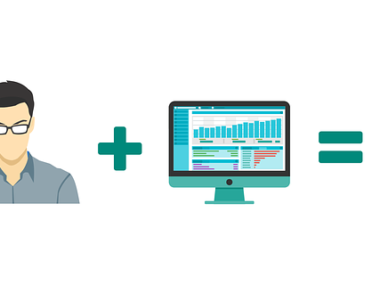There is almost no-one who hasn’t heard of how much effort Apple put into making sure their operating systems and devices are the most secure on the planet. One of the ways in which they display their commitment to this is the fact that their operating system is proprietary and cannot be used by just any mobile phone manufacturer to develop a device for public use.
iOS and MacOS application developers can also attest to the stringent process they have to go through in order to get their applications approved and published on the App Store. Appe does all of these to prevent the acquisition of sensitive information by the application or installation of malicious software on the devices of their users.
With regards to their security outfit, the following sections point a spotlight on the state of their device security, the threats their users face and how they can combat these threats.
What Sets Apple Apart from the Rest

Asides from the unique features that its proprietary software provides, Apple devices pride themselves in their security outfits. They put their money where their mouth is and this is evident in the low number of reported security breaches when compared to other devices that are not on iOS and macOS.
No system is 100% secure so despite Apple’s renowned security features on its devices, there have been reports of security breaches by customers worldwide. The following are a couple of threats Apple devices are prone to:
Security Threats facing Apple Users
- Malware – In recent years, iOS and macOS devices have been the recipients of cyberattacks, even more than others.
One of the more common ways through which these attacks arise is through malicious software. Malware is a pain to several users, and research shows that the average cost of dealing with malware per month is roughly $500 billion.
Malicious software installs itself on the victim’s device to steal or scramble the information available, depending on the instructions it was given to execute.
iWatches are considered the least likely recipients of a malware attack among Apple devices.
- Virus – This form of attack is more common among MacBook users, and almost non-existent on iOS devices, save for people who use “JailBroken” phones.
A virus is a form of dangerous code that attaches itself to a program, and attacks by replicating itself onto other programs on the computer, therefore damaging it. Viruses are usually transmitted onto the PC through file or app sharing from a compromised external drive.
iPods cannot be affected by viruses, but they can be carriers of a virus and could potentially transfer it to other devices.
- Phishing – Phishing attacks are responsible for over 90% of all cyberattacks, and they can come in many forms. Email phishing, spear phishing, Vishing, and Whaling are employed more often by cybercriminals.
The attack is done by sending a compromised link to the user under the guise of being legitimate, in the hope that he/she clicks on the link.
Once the link is opened, it grants the cybercriminal access to unprotected information on the browser; potentially exposing personal, intellectual, and financial information.
- Hacking – is a strategy employed by cybercriminals to find weaknesses in a device’s security system and exploit it to surveil the person or gather information.
Contrary to popular belief, iOS devices (iPhones, iPads, iPods, iwatch) can be hacked, although reported cases are not as popular as with MacBooks.
MacBooks are on the receiving end of a massive hack attack, designed to run on the new M1 chips released by Apple for its personal computers towards the end of 2020.
iPhone hack cases are extremely rare, but a statement released on Forbes.com has expressed that users run the risk of a hack while browsing unverified websites.
- Trust-Jacking – is a new security threat to iPhone users. Once the phone is connected via USB to an unknown computer, the user would be asked to select whether he or she trusts the PC with access to their data.
If the PC is compromised by hackers through unprotected/public Wi-Fi, agreeing that you trust the device gives the hacker access to data on the phone.
- Location Tracking – Every device that uses network connection, Bluetooth, and Wi-Fi connections run the risk of the location getting tracked. All devices have the option of easily turning off location tracking except when using certain applications.
iWatches face the greatest risk of location tracking as they require a steady connection to the internet and its GPS services to function effectively.
Setting up Cybersecurity for your Apple Devices

- Avoid Jailbreaking your iPhone
iPhones typically come with a lot of restrictions and less customization than Android devices. Hence, techies try to jailbreak their iPhones to allow for more flexibility like downloading apps from various stores.
This feature might seem cool but it exposes you to different forms of malicious software. If you want to make sure your iPhone is not ‘jailbroken’, use a jailbreak checking app. Alternatively, you can search for the Cydia app on your smartphone. If it appears, you’ll need to restore your device to factory settings and update your iOS.
- Switch on FileVault
Just like the name portrays, FileVault locks all of your data in a secure vault until a password is provided. It is a Mac software designed to encrypt all of the information available on your device. In case your device gets lost or stolen, you’d be rest assured no one would be able to access it without the passcode.
FileVault can be accessed under the ‘Security and Privacy’ part of System Preferences.
- Use the ‘Find My’ Apps on your Apple Devices
There are the ‘Find my iPhone’, ‘Find my Mac’, and ‘Find my iPad’ apps on Apple devices. The primary function of these apps is to get the location of Apple devices when they get lost or stolen.
Currently, the service extends to wiping all of the data on your data. Note that you’d have to have activated the service on your device before its loss. With your Apple ID, you’d be able to delete the data on your device remotely.
- Utilize a Virtual Private Network
A VPN(Virtual Private Network) is highly crucial to protecting your information on the network level. When you secure your MacBook with a VPN, internet traffic flow on the device becomes encoded and secure. This is performed when the VPN drives the traffic through a selected server.
Your IP address changes to that of the VPN server, making certain you remain untraceable on the internet. Even if your internet activity is revealed to a hacker, it would show as encrypted.
The benefit of VPNs extends to using public Wi-Fi. Not many people know that free Wi-Fi networks get hijacked frequently. Your credit card information and other login details can be stolen this way. Once you’re using a VPN, that data becomes secure even if you’re connected to a free Wi-Fi.
- Get an Extra Firewall
A firewall is a security tool that restricts strange data packets from getting into your device. It acts as a patrol service watching over the gateway that is your computer system.
Mac devices come with default firewalls. However, for better protection, you’ll need an extra firewall that can prevent malware that slips through Apple’s default firewall. With the release of new malware on the internet daily, the possibility that your Mac gets infected becomes higher.
Combine two firewalls to get the best protection. You can also consider getting a hardware firewall that’ll get connected to your router.
- Be Careful of Web Links
Links can be transmitted through email, messaging apps, or social media. Don’t just click on any link you receive for the fun of it. Click links that seem legitimate and avoid shortened URLs or random links.
For emails, the security bar is even higher. The standard cybersecurity rule for emails is that you don’t click it if you don’t know their source. This is because you could get phished or download malware from a link sent to you.
Whether you’re using your iPhone, iPad, or Mac, try not to click on web links that appear arbitrarily. This will protect your Apple device from all forms of malware
- Restrict App Access
The apps you have on your iPhone or iPad could be grabbing information about you. Depending on which areas the app has access to, there’s a possibility it might be gathering data on you.
From iOS 13, users can restrict the access certain apps have to their phones. You can choose to share your location with an app, allow access to the camera or microphone, and so on.
To use this feature, head over to ‘Privacy’ under Settings and click on the service. You’ll immediately see the applications that have requested access to the service’s data.
Final Thoughts
Roughly 20% of all humans use an Apple device for various functions. Therefore, they’re vulnerable to the cyber threats that plague Apple users.
Several risks face Apple users like hacking, phishing, malicious programs, and location tracking. To beat these threats you can encrypt your data on your MacBook, get another firewall, use a VPN, utilize the ‘Find my’ apps, and avoid jailbreaking your device.






